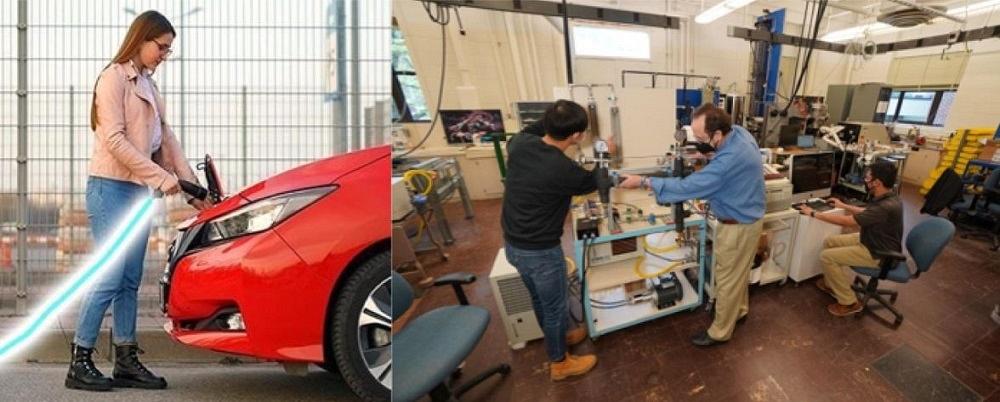- FMA
- The Fabricator
- FABTECH
- Canadian Metalworking
Cooling technique developed for space use makes charging EVs on earth quicker
- October 20, 2022
- News Release
- Management

Purdue University’s electric vehicle charging facility can charge a car in five minutes. The charging cable is cooled internally by dielectric fluid using subcooled flow boiling. Purdue University/Jared Pike
An advanced temperature control technique developed for future NASA missions also can make charging electric vehicles easier and faster, potentially paving the way for increased adoption of electric cars.
A team at Purdue sponsored by NASA’s Biological and Physical Sciences Division is developing a new technology, subcooled flow boiling, that will improve heat transfer to help complex systems maintain proper temperatures in space missions. That same technology could be used to control heat in EV charging systems providing 1,400 amps—the amount of power required to reach the industry goal of charging an EV in 5 min.
Currently, advanced chargers only deliver currents up to 520 amps, and most chargers available to consumers support currents of less than 150 amps. And charging times vary widely, from 20 minutes at a station alongside a roadway to hours using an at-home charging station.
Subcooled flow boiling has allowed the Purdue team to deliver 4.6 times the current of the fastest available EV chargers on the market today by removing up to 24.22 kW of heat.
subscribe now


Keep up to date with the latest news, events, and technology for all things metal from our pair of monthly magazines written specifically for Canadian manufacturers!
Start Your Free Subscription- Trending Articles
Sustainability Analyzer Tool helps users measure and reduce carbon footprint

Mitutoyo updates its end-user portal

Enhance surface finish with high-speed machining

Equispheres secures $20 million investment round

Solid carbide drills produce precision holes in short chipping materials

- Industry Events
Automate 2024
- May 6 - 9, 2024
- Chicago, IL
ANCA Open House
- May 7 - 8, 2024
- Wixom, MI
17th annual Joint Open House
- May 8 - 9, 2024
- Oakville and Mississauga, ON Canada
MME Saskatoon
- May 28, 2024
- Saskatoon, SK Canada
CME's Health & Safety Symposium for Manufacturers
- May 29, 2024
- Mississauga, ON Canada














